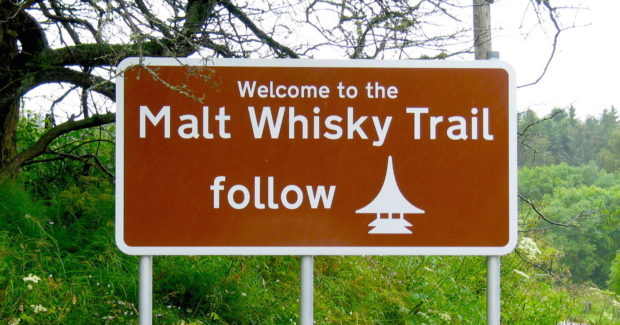I have tried manfully to avoid any mention of Brexit in these columns. However, its implications are so worrying for all sections of the UK and Scottish economies that it really can’t be avoided.
Nowhere is that truer than areas of manufacturing covered by the European Union’s PGI – Protected Geographical Indication – status. This covers Scottish produce such as Scotch beef, Scotch lamb, Arbroath smokies, and many others. But most importantly of all for the economy, it covers Scotch whisky.
There are over 120 distilleries spread across Scotland, divided between five producing regions, the most important of which, of course, is Speyside, employing hundreds of people in rural areas where jobs are at a premium.
That’s why, even before the likely impact of Brexit, the whisky industry has been looking beyond the simple production and sale of Scotland’s most iconic produce. In recent years, distillers have been expanding into promoting whisky as a tourist attraction in its own right.
They are absolutely right to carry out this diversification. Recently, in a bar on Speyside, I met a Japanese visitor. He was an architect and had come to Scotland just to sample whiskies. He was studiously going through the gantry, dram by dram, writing down his tasting notes at each sip. His trip to Scotland must have cost him a small fortune, but that is the attraction of our national tipple to many aficionados from around the world.
The first, small-scale whisky distillery visitor centres opened in the 1960s on Speyside, mostly as a ploy to stop curious visitors interrupting work at the stills. However, by 2000, nearly 50 distillery centres were in operation to cater for tourists, and that number has now risen even further.
But things have changed radically since the earliest attempts to cater for the tourism market. Most recently, plans have been submitted for a flagship Johnnie Walker visitor centre in Edinburgh, which is intended to be the focal point of Diageo’s £150 million investment in Scotch whisky tourism.
The proposal will see the restoration of a former department store at the West End of Edinburgh’s Princes Street, right in the heart of Scotland’s capital, into a major tourist attraction over three floors, taking people through the 200 year history of the brand, as well as the art and science of whisky-making. When fully operational it is envisaged that the centre will create between 160 and 180 new jobs and generate around £135 million in tourism spend in the wider Edinburgh economy through the visitors it attracts to the city.
Diageo aren’t alone in seeing the opportunities in widening the scope of the industry. Last year, Edrington opened a new distillery and visitor experience on the Easter Elchies estate on Speyside. They are investing £500 million in the brand of which the £140 million distillery and visitor centre is the centrepiece. It is a striking piece of contemporary architecture, cut into the slope of the land, reflecting the surrounding mountains.
These are perhaps the two highest-profile developments in the field. But there are others. Highland Park has just opened a shop on Kirkwall High Street, where tourists from visiting cruise liners can sample the malt, as the distillery itself is out of town. Last year, on a visit to Islay, I was agreeably surprised at the standard and number of the whisky visitor centres on the island, as well as the number of foreign tourists during what is generally considered the “off-season”. On Islay, where the road infrastructure is limited, the success of the whisky tourist attractions has brought its own problems, but at least they are problems generated by success rather than failure. There are other, less high-profile but equally successful, new projects, such as the visitor centres at the Isle of Raasay distillery off Skye, and the Clydeside distillery in the heart of Glasgow.
Each distillery offers something different not only in the visitor experience but also in the whisky on offer, with each single malt possessing its own characteristics of taste, smell and history.
In 2017, Scotland’s whisky distilleries recorded 1.7 million visits, up 8% from 2015 and up 65% from 2013, according to VisitScotland. They registered an average spend of £31 per person, up from £27 the previous year. Total spending at whisky centres topped £60 million, with the highest number of visitors from Germany and the United States, followed by India, China and Japan. While many of these visitors come to Scotland purely for the whisky experience, their impact on the wider economy is significant, with knock-on benefits for hotels, shops, transport and so on.
Brexit, in whatever form it finally comes, will undoubtedly impact on most sectors of the Scottish and UK economy, but the whisky industry at least is taking the correct steps to counter its worst excesses.
Campbell Gunn is a retired political editor who served as special adviser to two First Ministers of Scotland

